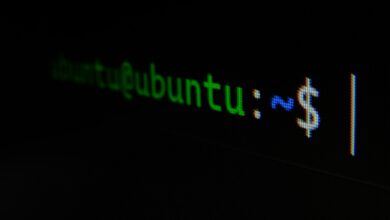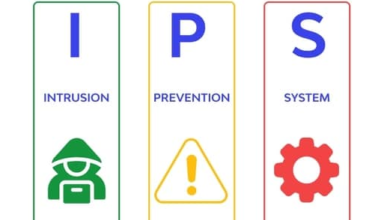
Introduction To Cuerdos Linux Password
In the realm of digital security, where every keystroke holds the potential to safeguard or compromise sensitive information, Cuerdos Linux emerges as a beacon of resilience and fortitude. As we navigate the intricate landscape of cybersecurity, the significance of a robust and impenetrable Cuerdos Linux password cannot be overstated. With cyber threats lurking around every virtual corner, the need for a comprehensive defense mechanism is more pressing than ever.
Picture this: You’re the gatekeeper of your digital kingdom, entrusted with the task of fortifying the virtual walls that safeguard your personal and professional data. Your Cuerdos Linux password serves as the first line of defense, a formidable barrier that stands between unauthorized access and the sanctity of your digital realm.
But what sets Cuerdos Linux apart from the plethora of operating systems clamoring for your attention? It’s the unwavering commitment to security, the relentless pursuit of excellence in safeguarding your digital assets. From its advanced encryption protocols to its intuitive multi-factor authentication mechanisms, Cuerdos Linux empowers users to take control of their digital destiny with confidence and peace of mind.
Join us on a journey into the heart of Cuerdos Linux password security, where every character, every passphrase, is a testament to your commitment to fortifying the digital frontier. It’s time to unlock the power of Cuerdos Linux password and embark on a quest for digital sovereignty like never before.
Table of Contents
What is a Password?
A password is the digital sentinel, the guardian of virtual gateways in the realm of cybersecurity. In the intricate tapestry of Cuerdos Linux and beyond, it serves as the key that unlocks access to secure systems and confidential data. Comprising a unique combination of characters, including letters, numbers, and symbols, a password acts as a formidable barrier against unauthorized entry into personal and professional domains.
Think of a password as a secret handshake, known only to authorized individuals, granting them passage into protected territories. In the labyrinth of cyberspace, where threats lurk around every digital corner, a strong password stands as the first line of defense, thwarting the nefarious intentions of cybercriminals and safeguarding the integrity of digital identities.
Why are Passwords Important?
In the digital age, the significance of passwords cannot be overstated. As the primary defense mechanism, passwords act as virtual gatekeepers, safeguarding sensitive data on Cuerdos Linux systems from unauthorized access. They serve as cryptographic keys, granting entry only to those with authorized credentials. Without robust passwords, the integrity of personal and professional information stored on Cuerdos Linux would be at risk of compromise, potentially leading to data breaches and security breaches.
A strong password policy is imperative in mitigating cyber threats and ensuring the confidentiality of digital assets. By adhering to best practices for password management, users can fortify the security posture of their Cuerdos Linux environments and minimize the risk of unauthorized intrusion. Ultimately, passwords are the foundation of cybersecurity, playing a pivotal role in protecting the privacy and security of individuals and organizations alike.
How CuerdOS Linux Handles Passwords
CuerdOS Linux employs advanced methodologies to manage and protect passwords. Upon creation, passwords are encrypted using sophisticated hashing algorithms. This process converts passwords into complex, unreadable strings that are securely stored within the system. Even if a breach occurs, these encrypted passwords remain indecipherable to unauthorized users. Additionally, CuerdOS Linux supports multi-factor authentication (MFA), which requires users to provide additional verification, such as a one-time code sent to their mobile device. This added layer of security ensures that even if a password is compromised, unauthorized access is still prevented. By integrating these cutting-edge techniques, CuerdOS Linux fortifies its defenses against cyber threats.
Password Requirements

Creating a robust and secure password is fundamental for safeguarding sensitive information. In CuerdOS Linux, the password requirements are designed to ensure maximum security and mitigate potential cyber threats. Here are the steps to create a strong CuerdOS Linux password:
- Minimum Length: Passwords must be at least eight characters long. This length provides a balance between usability and security (usually 8 characters or more).
- Character Variety: Incorporate a mix of uppercase letters, lowercase letters, numbers, and special characters. This diversity makes the password more resistant to brute force attacks and at least one special character (e.g., !, @, #, $).
- Avoid Common Phrases: Do not use easily guessable passwords like “password123” or “admin.” These are the first to be tested in any hacking attempt.
- Personal Information: Avoid using personal information such as birthdays, names, or common words. Hackers can easily find this information and use it to guess your password.
- Regular Updates: Change your CuerdOS Linux password periodically to maintain security. Regular updates reduce the risk of long-term exposure to compromised credentials.
- Unique Passwords: Use different passwords for different accounts. This practice ensures that a breach in one account does not compromise others.
Password Management
Effective password management is crucial for maintaining the security of digital assets. In CuerdOS Linux, managing passwords involves several best practices to ensure that sensitive information remains protected.
| Steps for Robust CuerdOS Linux Password Management | Description |
|---|---|
| Utilize a Password Manager | Integrated password managers can generate and store complex passwords securely. This reduces the need to remember multiple, intricate passwords. |
| Regularly Update Passwords | Change your CuerdOS Linux password at regular intervals. Frequent updates minimize the risk of long-term exposure to compromised credentials. |
| Unique Passwords for Different Accounts | Use distinct passwords for different accounts. This practice ensures that if one account is breached, others remain secure. |
| Monitor for Breaches | Stay vigilant for security alerts. CuerdOS Linux provides notifications for potential breaches, prompting immediate password changes if necessary. |
| Enable Multi-Factor Authentication (MFA) | Enhance security by enabling MFA. This adds an extra layer of verification, making it significantly harder for unauthorized users to gain access. |
Conclusion
In conclusion, the importance of robust password management cannot be overstated. As digital threats continue to evolve, safeguarding access to sensitive information becomes paramount. Utilizing best practices for creating and managing passwords is essential. By adhering to stringent password requirements and leveraging advanced security features, users can ensure that their CuerdOS Linux password remains a formidable barrier against unauthorized access.
CuerdOS Linux exemplifies a strong commitment to security through its comprehensive approach to password management. The integration of advanced encryption, multi-factor authentication, and proactive breach monitoring provides users with a secure environment. Regularly updating passwords, using unique credentials for different accounts, and employing password managers are all critical steps in maintaining the integrity of digital assets.
Ultimately, a well-managed CuerdOS Linux password is a cornerstone of digital security. By following these guidelines and staying vigilant, users can protect their personal and professional information from potential cyber threats. As the landscape of digital security continues to change, maintaining strong password practices will remain a key strategy in defending against unauthorized access and ensuring the confidentiality of valuable data.
Frequently Asked Questions About Cuerdos Linux Password
1 – What is CuerdOS Linux? CuerdOS Linux is an operating system known for its security features, including password management.
2 – How do I create a strong password on CuerdOS Linux? Use a combination of uppercase and lowercase letters, numbers, and symbols. Avoid using easily guessed information.
3 – Can I reset my password on CuerdOS Linux? Yes, you can reset your password using the password reset options in the system settings.
4 – Is multi-factor authentication available on CuerdOS Linux? Yes, CuerdOS Linux supports multi-factor authentication for enhanced security.
5 – How often should I change my password on CuerdOS Linux? It is recommended to change your password regularly, at least every 90 days, to maintain security.
6 – Can I use a password manager on CuerdOS Linux? Yes, you can use a password manager to store and manage your passwords securely.
7 – What should I do if I forget my CuerdOS Linux password? You can reset your password using the password reset options available during the login process.
8 – Are there any specific password requirements for CuerdOS Linux? Yes, CuerdOS Linux has specific password requirements, including minimum length and character complexity.
9 – How can I improve the security of my CuerdOS Linux password? You can improve the security of your password by using a longer passphrase and avoiding common patterns or sequences.
10 – Is it safe to store passwords on CuerdOS Linux? Yes, CuerdOS Linux provides secure storage options for passwords, but it is still recommended to use a password manager for added security.




